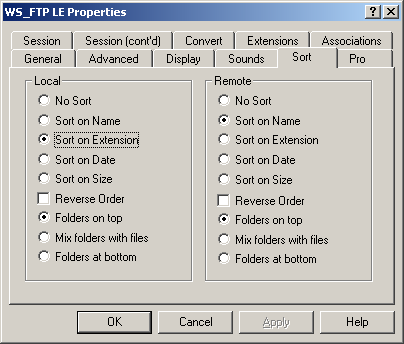
press OK and the profile will be saved and the connection will start as shown below:.enter your HOME (network ID) username (UBxxxxx or NWSxxxx at UB) and password and leave account blank as in the example.give a name to the profile (in the example I called mine 0cisnt).double click on the WS_FTP icon and you will see a profile window to create connections to remote ftp servers:.Creating a profile to connect to another computer.drag and drop the WS_FTP95 LE shortcut in your desktop because you will use FTP frequently.You will see installation messages (you can accept the defaults) and at the end you will see the following in your desktop, if you accepted the defaults: Go to the directory you saved the file ws_ftple.exe and double-click on it.Save it in a temporary directory in your PC (make a note where you saved it). This is a self-extracting file that will install WS_FTP LE in your machine. Choose Download 5.xx 32 bit Self-Extracting.For a Windows version of wsftp just select this link to go for the page that will allow you to download it - look at the bottom right side for the free WS_FTP LE. I recommend that you download a free copy (for students) of WS_FTP LE and install it in your PC.

Getting a free copy of WS_FTP to work off-campus:.How to use FTP in Windows 98/NT/2K/XP - WS_FTP LE

It can be a dial-up or always on (T1, Cable Modem, DSL) connection to an ISP. Your computer needs to be connected directly to the Internet through TCP/IP or SLIP/PPP protocols provided by an Internet Service Provider (ISP). The Internet program to transfer files between computers in the Internet. This is an introduction on how to transfer files between computers in the Internet - File Transfer Protocol (FTP) and the use of Windows 98/NT/2K/XP software to perform these transfers at the University of Baltimore.Ī brief introduction to Telnet - remote connection to a computer in the Internet using a text based interface - is also provided at the end of this tutorial. Telnet and FTP File Transfer Protocol and Telnet


 0 kommentar(er)
0 kommentar(er)
